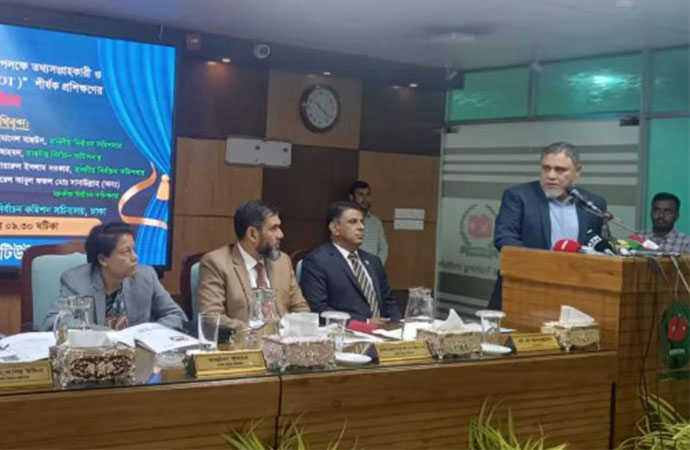Column

Japanese population is shrinking. This is no secret as the country for quite some time has been talking about the problem and trying to find out possible solutions to issues related to declining population. Continuous drop of population coupled with the aging of the society is creating extra pressure on the budget as declining population would mean loss of revenue earning against increasing expenditure for care giving services for the elderly. In economic terms, the proportion of the dependent population is rising. Hence, Japan is exploring various options that would help the country address the issues that arise from this demographic shift.
Japan, the country that would keep its doors firmly shut to foreign workers even at the turn of the century, is now compelled to change the rigid immigration policy to allow overseas helping hands entering the country to keep the economy as well as country's social services running. However, the guided and restricted policy is hardly encouraging highly skilled workforce to come to the country to work. The newly introduced visa system, though less rigid than what was in practice before, still would not allow blue collar workers to bring their families or stay beyond a limited period of time. The result is, no sign for the country getting out of the population quagmire.
Japan's Ministry of Health, Labour and Welfare released the latest population related data in late December, showing that the projected number of newborn babies in 2019 is to drop below 900,000, hitting the lowest level since comparable data became available 120 years ago. The number of babies born in 2019 is estimated to be around 864,000, roughly less than 54,000 from a year ago. The data also shows that in the same year Japan is supposed to record 1,376,000 deaths; thus recording a natural population decline of 512 thousand; the highest figure in post World War II period. The shrinking population will increase pressure on country's pension, national health care and medical system and also drastically reduce the number of economically active workforce; thus complicating further smooth running of countries economic machines.
Policymakers in Japan have long been working on finding a solution to declining population issues and despite suggesting measures like easing conditions at the workplace for working women by expanding facilities like child-care and nursery schooling for pre-primary school children and also by introducing various stimulating measures for young couples to encourage them to have more babies, nothing seems to be showing any durable result. The latest figure of childbirth is a glaring example of that failure.
As a result, frustrated politicians in times are making foul comments targeting the youth, particularly young women, and thus making the situation more complicated. Most susceptible among such politicians is the Deputy Prime Minister and Finance Minister Taro Aso, known for his gaffe over various complicated issues the country has been facing. Addressing a briefing session on national politics to his constituents in Fukuoka Prefecture last February, Aso criticized women who have not given birth to children. Chief Cabinet Secretary Yoshihide Suga also in the recent past has urged women to contribute to the country by having more children.
It is not only the childbirth which is showing a continuous declining trend; marriage figure too is falling. In contrast, divorce rate in Japan is showing an upward trend, thus further complicating the population scenario. Health, labour and social welfare ministry data also show that the number of couples who married in 2019 fell to a postwar low of 583,000, while number of divorces increased by 2,000.
Number of children born in Japan has dropped 30 percent over the period of 30 years and with the decrease of the number of child-bearing age women, the figure is to drop further in coming years. Though the government has set a target of raising fertility rate to 1.8 by the end of 2025 fiscal year, with all such negative trends the goal seems to be a difficult one to achieve. Currently the fertility rate stands at 1.42. The trend of Japan's natural population decrease has continued for 13 consecutive years and thus bringing the total population in 2019 down to 126.32 million. The population is projected to fall to about 83 million by 2050 when 35 percent of Japanese will be aged over 65.
The most plausible option that many see for Japan as the best way to tackle the population problem is to open the door for foreign workers to come to the country to fill up the vacuum that country's labour market is already encountering. With further decline of population, the problem is bound to turn much more complicated unless drastic measures to tackle the issue are not taken in time. However, being a homogeneous country used to its own traditional way of life, many in the country do not find the influx of foreign labour force comfortable. Japanese government is also aware of such public attitude and hence, opting for a cautious way forward. But for how long the country will be able to afford resisting the natural trend of migration is a big question looming before Japan. With the slow opening of the door for foreign workers in the field of nursing and caregiving, sooner or later the ripple impact is sure to rock other sectors as well. As Japanese society continues aging, demand for workforces in other fields are bound to become more acute. The advancement of robotic technology might be good for industrial sector, but is obviously incapable yet to provide all the services that human hands can extend. So, for Japan a much wiser option would probably be the one that calls for getting ready for a time when restrictions are to be removed further.
(Tokyo, December 30, 2019)

























Leave a Comment
Recent Posts
23rd DIFF concludes; ‘Priyo Ma ...
The 23rd Dhaka International Film Festival (DIFF) concluded on Sunday, ...
Gallery Chitrak launches Syed ...
The publication ceremony of the book "Rafiqun Nabi'r Chitraba ...
‘Power of Pain and Pathos 2’: Embassy of the Netherl ..
‘Echoes In Form’: Rediscovering Shyamal Chowdhury th ..
SeaKeepers shows the way for plastic waste managemen ..
Exploring Sundarbans: A sense of wonder and global r ..